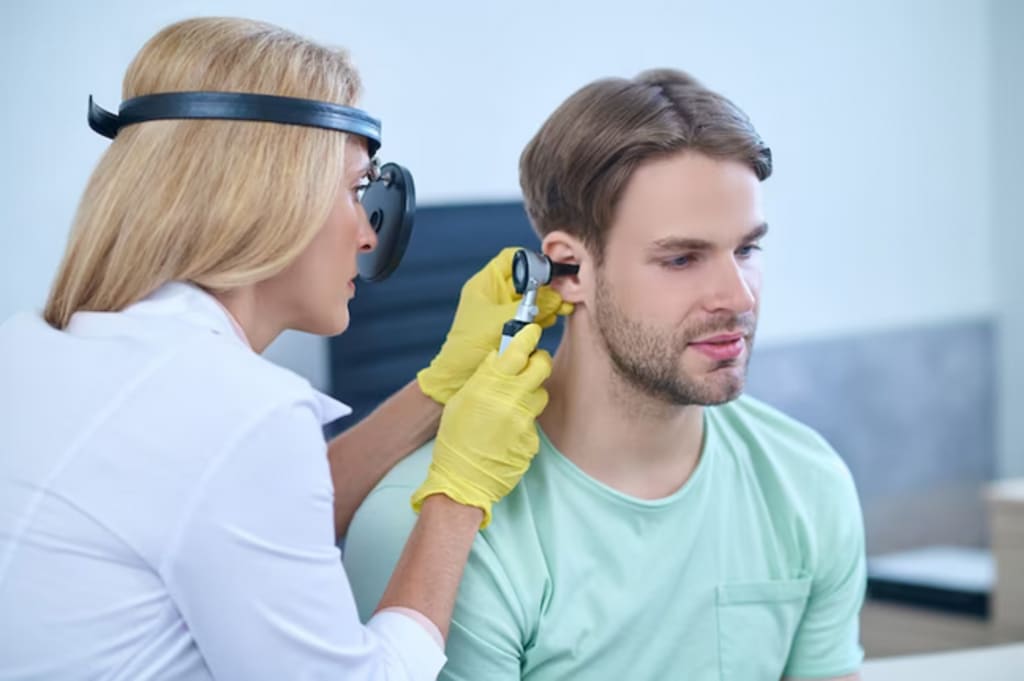The ultimate guide to ear wax removal in birmingham
ear wax removal

Introduction:
Ear wax, also known as cerumen, is a natural substance produced by glands in the ear canal. It serves as a protective barrier for the ear, preventing dust, debris, and harmful microorganisms from entering the delicate structures of the ear. However, excessive ear wax buildup can lead to discomfort, impaired hearing, and other complications. If you're a resident of Birmingham and are seeking effective solutions for ear wax removal, this comprehensive guide is here to help. In this guide, we will explore various methods of ear wax removal in birmingham, potential risks, FAQs, and conclude with essential information to ensure your ear health.
Understanding Ear Wax
To effectively manage ear wax removal, it's crucial to understand its purpose and characteristics. Ear wax is a waxy substance produced by the glands in the ear canal. It consists of a combination of dead skin cells, oils, and other debris. Ear wax helps trap dust, bacteria, and foreign particles, preventing them from reaching the eardrum. However, when too much wax accumulates, it can cause blockages and affect hearing.
Symptoms of Excessive Ear Wax
Identifying the symptoms of excessive ear wax is essential for timely intervention. Common symptoms include earache, tinnitus (ringing in the ears), hearing loss or muffled hearing, dizziness, itchiness, and a sensation of fullness in the ear. If you experience any of these symptoms, it's important to seek professional assistance for ear wax removal.
Methods of Ear Wax Removal
Ear Drops: Over-the-counter ear drops can help soften and loosen the ear wax, making it easier to remove. These drops often contain hydrogen peroxide, saline solution, or mineral oil. It's important to follow the instructions provided and consult a healthcare professional if you have any concerns.
Irrigation: This method involves using a syringe-like device to flush warm water into the ear canal, which helps dislodge and flush out the ear wax. While irrigation can be effective, it should only be performed by a trained professional to avoid injury or damage to the ear.
Manual Removal: In some cases, a healthcare professional may manually remove the ear wax using specialized tools such as curettes or suction devices. This method should only be performed by a qualified professional to minimize the risk of injury.
Risks and Precautions
While ear wax removal is generally safe, it's important to be aware of potential risks and take necessary precautions:
Avoid using cotton swabs or any other objects to clean your ears, as they can push the wax deeper or cause damage to the ear canal.
Individuals with a history of ear problems, ear surgeries, or a perforated eardrum should consult a healthcare professional before attempting any ear wax removal methods.
Excessive or forceful removal attempts can lead to ear canal abrasions, infections, or damage to the eardrum.
If you experience severe pain, bleeding, or worsening symptoms during or after ear wax removal, seek immediate medical attention.
FAQ's
Q1: What is ear wax?
A1: Ear wax, also known as cerumen, is a natural substance produced by glands in the ear canal. It helps protect the ear by trapping dust, dirt, and other particles, preventing them from reaching the eardrum.
Q2: Why do I need to remove ear wax?
A2: While ear wax is usually harmless, excessive buildup can cause hearing loss, discomfort, and other ear-related issues. Removing ear wax can help alleviate these problems and improve overall ear health.
Conclusion:
Proper ear wax removal is essential for maintaining good ear health and preventing discomfort or hearing issues. In Birmingham, various methods, such as ear drops, irrigation, and manual removal, can be used under the supervision of healthcare professionals. It's crucial to be aware of the risks associated with incorrect ear wax removal practices and to seek professional help if needed. Remember, maintaining a healthy balance of ear wax is important, as complete removal can lead to dryness and other complications. By following the guidelines outlined in this ultimate guide, you can ensure safe and effective ear wax removal for optimal ear health.
About the Creator
Enjoyed the story? Support the Creator.
Subscribe for free to receive all their stories in your feed. You could also pledge your support or give them a one-off tip, letting them know you appreciate their work.





Comments
There are no comments for this story
Be the first to respond and start the conversation.